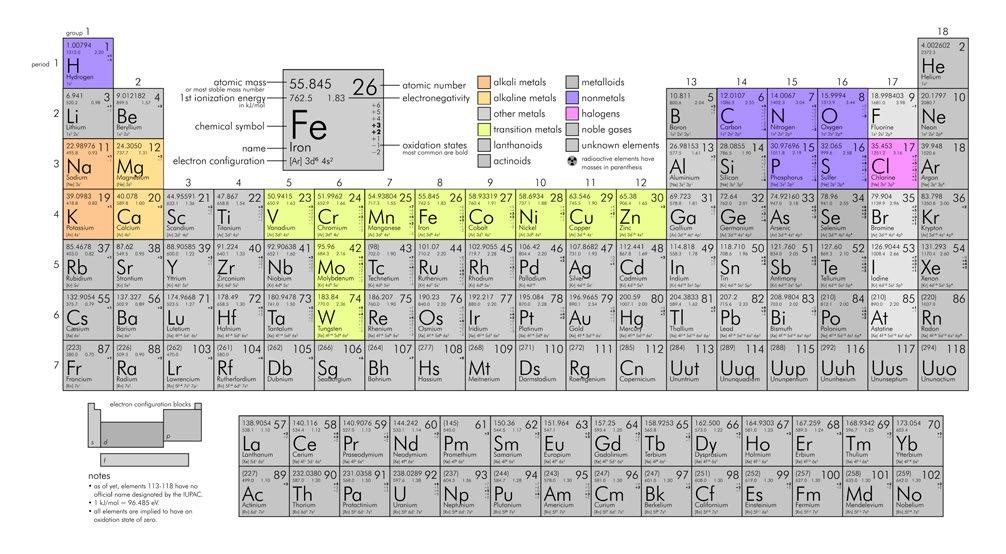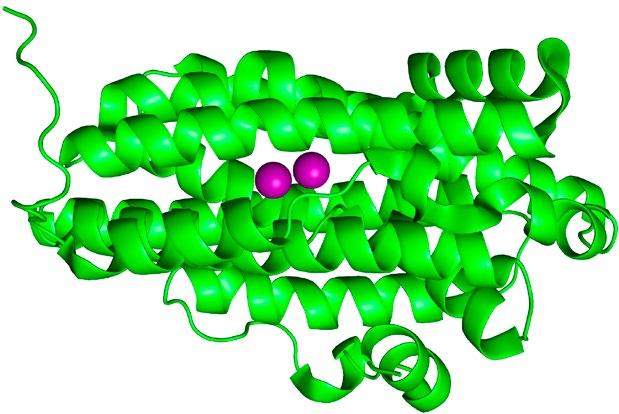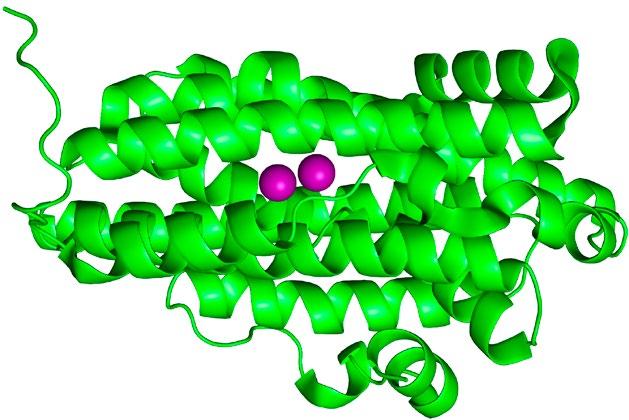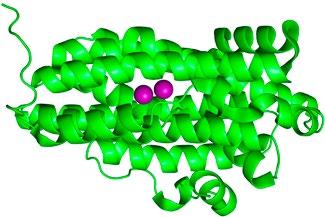
4 minute read
05.12 Catherine Hayes
from Provost & President's Retrospective Review 2011-21
by Public Affairs and Communications (PAC) - Trinity College Dublin
05
Exploring the trace metals of life Aidan McDonald
Biological inorganic (bioinorganic) chemistry defines the roles that metals play in biology (Figure 1), including biological chemical reactions involving metals, metalloproteins and metalloenzymes (enzymes are nature’s catalysts – species that accelerate a reaction). Bioinorganic chemistry includes investigations into the natural chemistry of metals and metalloproteins/enzymes (e.g. the transport of oxygen in our blood by iron) as well as non-natural phenomena involving metals (e.g. platinum containing anti-cancer drug cis-platin). Of particular interest is a superfamily of metalloenzymes called oxygenases. Oxygenases employ atmospheric oxygen and a metal (often manganese, iron, or copper) to facilitate oxidation reactions at ambient temperatures and pressures. An example of oxygenases that are critical to life are the cytochromes P450 that are found in the human liver, where they act to oxidise foreign molecules (e.g. medications) and thus cause the elimination (metabolism) of these molecules. Oxygenases also facilitate DNA/RNA synthesis and repair, protein modification, and antibiotic biosynthesis, amongst many other oxidative transformations. We study the chemistry of such oxygen-dependent enzymes to develop a fundamental understanding of their (bio)chemistry and to develop synthetic mimics that perform the same chemistry. Understanding metalloenzymes – My group in the School of Chemistry studies Ribonucleotide Reductases (RNRs), a family of enzymes that performs oxygenase-like reactivity, and that play a pivotal role in human health. RNRs are involved in DNA synthesis – they perform an oxidation reaction using oxygen that leads to the formation deoxynucleotides, which are the precursors to DNA. We explore the mechanism (the series of elementary chemical conversions that define a reaction) of RNR oxidation reactions. Unfortunately, interrogating enzyme mechanisms is extremely challenging. We develop synthetic analogues of the metal sites of these enzymes (Figure 2, dimanganese RNRs). These compounds display the same properties as the enzyme active site, with added benefits: (i) they are easier to analyse; and (ii) we can probe their reactivity at very low temperatures, thus slowing the elementary chemical conversions. The outcome of these investigations has garnered an understanding of how the RNRs produce deoxynucleotides, providing the first and only experimental insights into certain (bio)chemistries of RNRs. Synthetic mimics for industrial reactions Certain oxygenases (similar to the P450s) perform a challenging reaction: the conversion of hydrocarbons (petroleum-derived chemicals) to commodity chemicals for the pharmaceutical and materials industries, such as the conversion of methane (natural gas) to methanol (a biofuel). Current industrial methods for these reactions require high temperatures and consume large quantities of energy. Developing mild, cheap, and efficient biomimetic oxidation of such hydrocarbons is our goal. We have made breakthroughs in the tuning of the reactivity properties of biomimetic iron and nickel oxidants and the identification of an entirely new class of hydrocarbon oxidation (called metal-halide mediated oxidation). This new class of oxidation reactions performs reactions at speeds comparable to the biological parents, providing a promising novel oxidant for the conversion of hydrocarbons to commodity chemicals. This interdisciplinary research exploits skills from the fields of biochemistry, chemistry, and physics to come to a detailed understanding of biological reactions. Overall, our bioinorganic explorations help to develop novel industrial oxidants, and to provide a deep understanding of oxygenase enzymes, potentially benefiting both environmental and human health.
Aidan McDonald is an Associate Professor in Inorganic Chemistry. He received a B.A.(mod) from Trinity College Dublin (2002) and completed his Ph.D. at Utrecht University (2008). He was elected Fellow in 2020. Aidan was a National Institutes of Health (USA) Kirschstein fellow and a Marie Curie fellow, and currently holds an ERC Starting Grant and a Royal Society/SFI University Research Fellowship. He was recently awarded the Royal Society of Chemistry Sir Edward Frankland Fellowship and the Society of Biological Inorganic Chemistry EuroBIC Medal. Contact: aidan.mcdonald@tcd.ie
FIG 1 – The essential elements of life. C, H, N, O are the four most abundant elements in biological systems, alongside Na, K, Mg, Ca, P, S, and Cl. The trace elements (V, Cr, Mn, Fe, Co, Ni, Cu, Zn, Mo, W) are found in micro- to milli-gram quantities in a 70 kg human body, but are essential for life. Image modified from commons.wikimedia.org/wiki/File:Periodic_table_large.png
FIG 2 – Left: Representation of dimanganese (Mn2) RNR from X-ray crystallographicallly determined structure (PDB: 3n37). The purple spheres are the Mn atoms (highlighted for effect) while the green ribbons represent the protein structure. Middle: Close-up view of the Mn2 active site with atoms represented using a ball-and-stick model (Mn = purple; O=red; N=blue; C=grey; H omitted for clarity). Right: Synthetic model compound used to understand the properties of the RNRs.
FIG 1
The Essential Elements of Life



Metalloprotein Active Site Metalloprotein Active Site Metalloprotein Active Site












